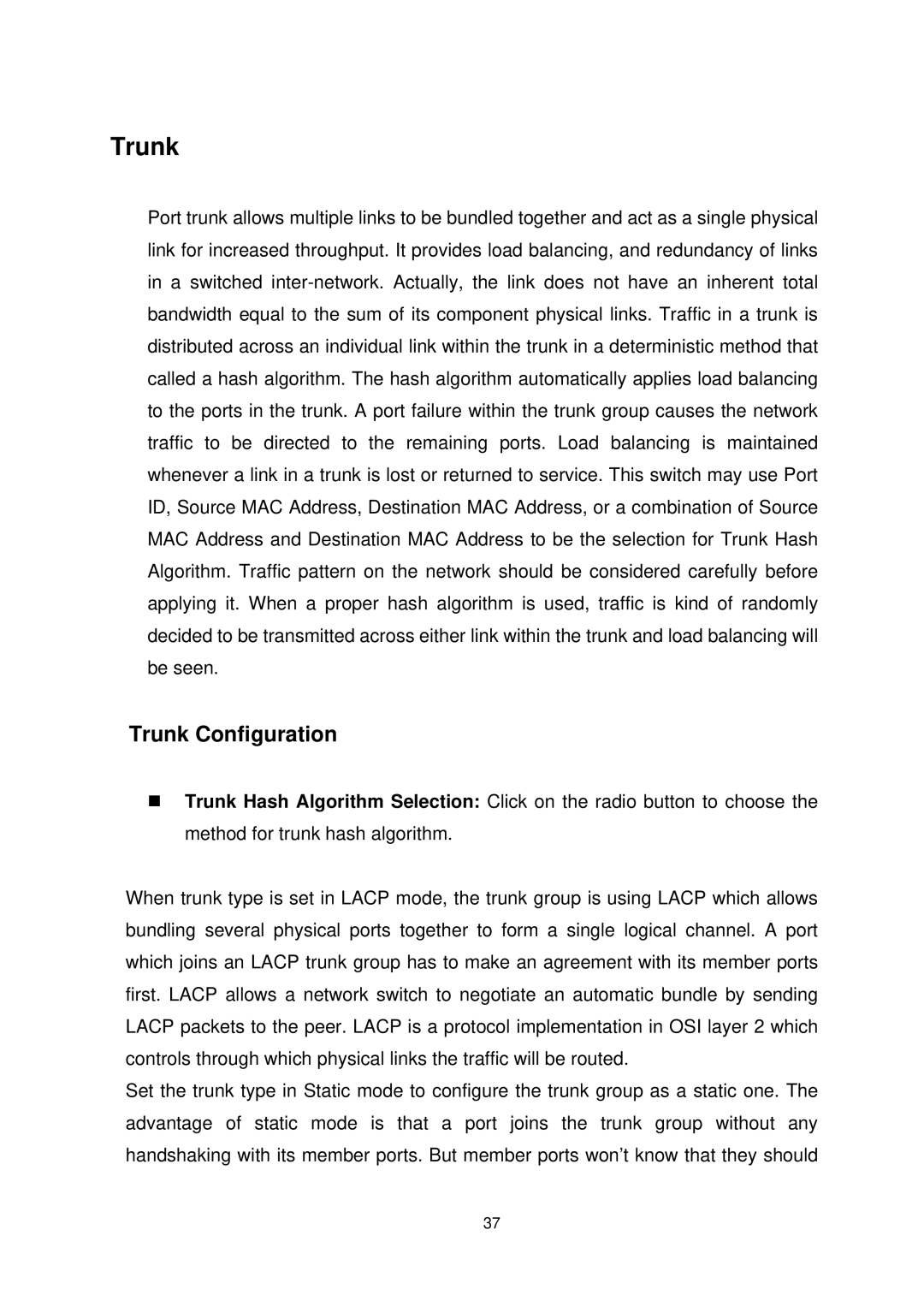Trunk
Port trunk allows multiple links to be bundled together and act as a single physical link for increased throughput. It provides load balancing, and redundancy of links in a switched
Trunk Configuration
Trunk Hash Algorithm Selection: Click on the radio button to choose the method for trunk hash algorithm.
When trunk type is set in LACP mode, the trunk group is using LACP which allows bundling several physical ports together to form a single logical channel. A port which joins an LACP trunk group has to make an agreement with its member ports first. LACP allows a network switch to negotiate an automatic bundle by sending LACP packets to the peer. LACP is a protocol implementation in OSI layer 2 which controls through which physical links the traffic will be routed.
Set the trunk type in Static mode to configure the trunk group as a static one. The advantage of static mode is that a port joins the trunk group without any handshaking with its member ports. But member ports won’t know that they should
37
